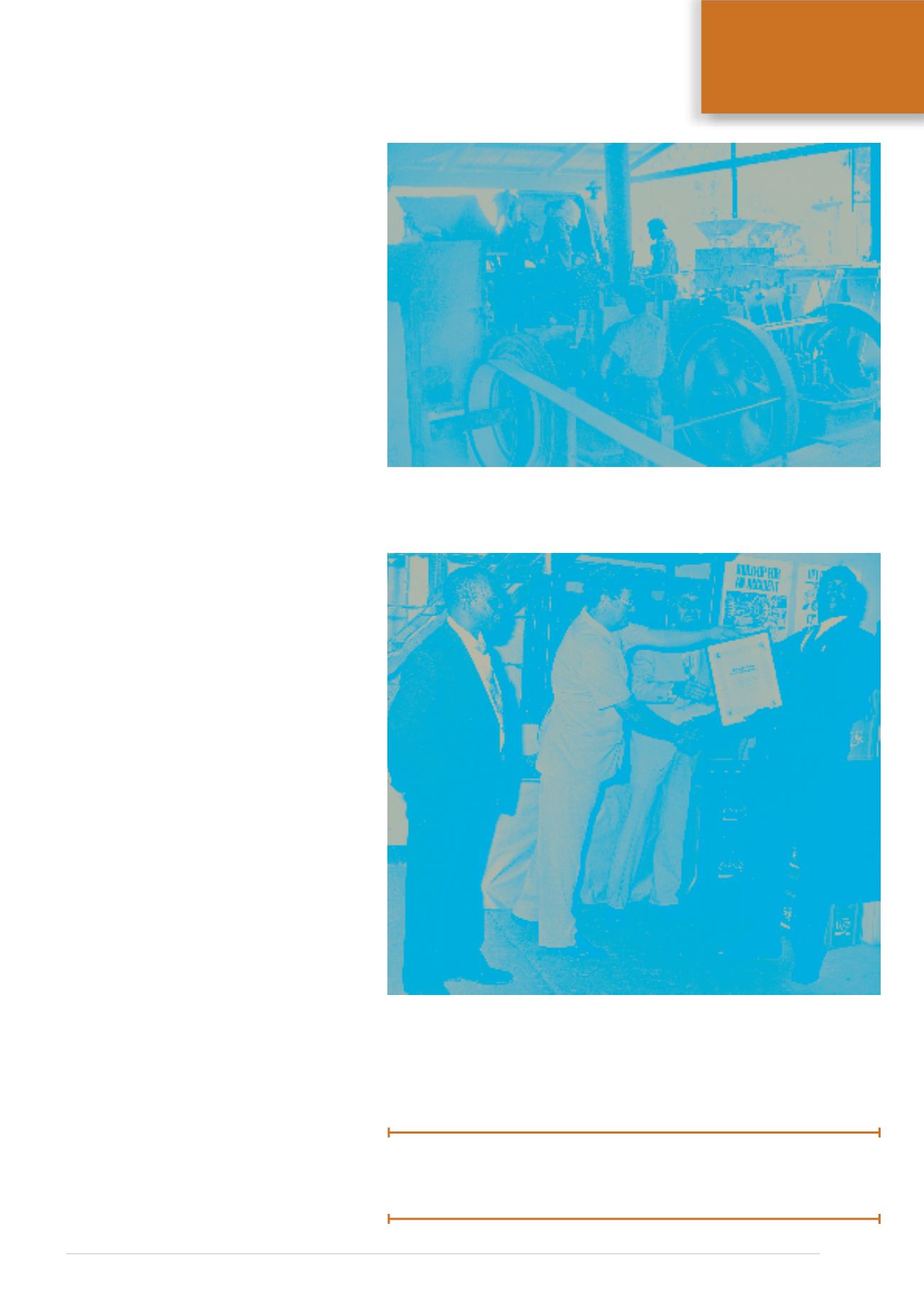
January - February 2014
MODERN QUARRYING
17
FACE TO FACE
completely empty. By now, the dry chemical from
the extinguisher had displaced all oxygen in the
cab and I had no choice but to stop in the middle
of the road and abandon ship. Longone was still
in the cab with white power billowing out of the
windows, fighting this extinguisher before he also
detrucked.
“A guy driving a Volkswagen had stopped close
behind us. Reading the wording EXPLOSIVES/
SPRINGSTOWWE and seeing the white power bil-
lowing out of the windows, he decided it was time
to get out of there. Unfortunately he couldn’t drive
forward into the oncoming traffic and he couldn’t
reverse as the cars were queueing up behind us. He
debussed with haste, finding shelter alongside the
road, down an embankment.”
Henry was transferred to Coedmore quarries
shortly after that, which he says was the start of
“big mining for me. We produced 150 000 t of rock
a month and worked long hours. Loading and haul-
ing was carried out with big 87 t excavators and
30 t dumpers. There were huge spraylights on the
perimeter of the quarry and we hauled stone from
the quarry until 20:00 or 21:00 hours every night
in a single shift. I saw people getting so tired that
they came out of the quarry, and reversed into the
tip without a load. I had to blast every day to keep
up with production.”
Willie Hartzer was the manager at Coedmore at
that time, whom, Henry says, was an 80 t gorilla-
type of manager. “When you were called to his
office for some reason or another, he would pull
out the top drawer of his desk and say: ‘Ek kots
sommer in hierdie laai [I feel like puking in the top
drawer]’. Needless to say, we had plenty of shout-
ing matches as I did not take well to this kind of
treatment.
“In 1989 James Kennedy started with me as a
Learner Blaster, and we had both hard times and
great fun running Coedmore quarries.”
Blastholes were drilled with five Atlas Copco
rigs drilling 76 mm-diameter holes up to 18 m
deep. These rigs were later replaced with two
hydraulic rigs with air-conditioned cabs that could
do the work of five air rigs. “A combination of det-
onating core with short-period delay electronic
detonators were used for blasting. James and I
did the fist Shocktube test blast in South Africa in
1993. It was a great success and a big step forward
in blasting.
“Shortly after that, I did the first electric sequen-
tial blast in an opencast mine with AECI,” Henry
says. “It was not a very user-friendly system and
due to its problems was abandoned. During this
period, we also changed from cartridged explo-
sives to pumpable emulsions. We kept to blasting
with Shocktube until 2001, when we changed to
fully programmable electronic blasting. This was a
From this came my saying if people asked me about my
length of service ... ‘40 years plus overtime’.
Safety first in the 1960s: The ngolovans were loaded by hand in the quarry and pushed about
400 m from the quarryface to the primary crusher, where the workers were handed a washer as
proof of the load. This was very hard work. The tracks were moved around by the loading team
themselves. Note the lack of guarding on those massive flywheels.
Picture shows Willie Harzer handing over a certificate with Herr Weber in the background. When
Willie disagreed with something in a meeting, he would pull the top drawer of his desk open, bend
over it and say: “Ek kots sommer in die laai.”
massive leap in blasting technology that allowed
us total control over the blast.
“I felt proud that James Kennedy and I were


